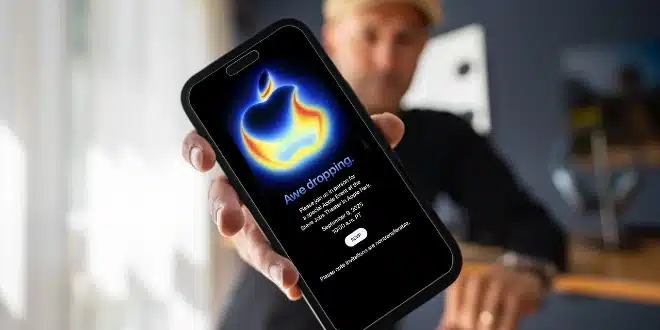Apple has officially confirmed its next major product launch, inviting media outlets to an event on September 9 at its Apple Park headquarters in Cupertino, California. The company is widely expected to unveil the iPhone 17 lineup, new Apple Watch models, and potentially other hardware updates.
The invitation carried the tagline “Awe dropping,” a nod to Apple’s signature style of hinting at upcoming innovations without revealing specific details. Since 2012, the tech giant has consistently used September to introduce its flagship iPhones, making this event the most important date in its calendar year.
iPhone 17 and Apple’s Design Gamble
While Apple rarely confirms features in advance, reports suggest the iPhone 17 will debut a slimmer, ultra-light design — described by some insiders as the “MacBook Air of iPhones.” This sleeker frame could come with trade-offs, potentially reducing battery performance and camera capacity, but Apple appears confident that a fresh design will rekindle consumer enthusiasm in a saturated smartphone market.
The timing is crucial. Recent data shows most buyers now upgrade iPhones only when necessary, as competitors like Samsung and Huawei push out foldable devices with futuristic form factors. Apple has resisted that route, instead focusing on refining design and durability. Its experiment with varied phone sizes hasn’t always succeeded — the iPhone Mini was discontinued after two generations, and the larger iPhone 16 Plus struggled to gain traction, accounting for just 5–10% of shipments last year. Analyst Ming-Chi Kuo has even predicted that Apple will retire the Plus line entirely in 2025.
Alongside the sleeker edition, Apple is expected to release the standard iPhone 17 and updated Pro models, the latter typically featuring advanced cameras, titanium builds, and more powerful processors.
The AI Factor
This year’s launch comes against a backdrop of heightened competition in artificial intelligence. Apple’s delayed rollout of a major Siri upgrade has left the company behind rivals such as Google’s Gemini and OpenAI’s ChatGPT. Still, Apple has positioned its devices as “built for Apple Intelligence”, a theme first introduced with the iPhone 16 and likely to continue with the 17.
Investors remain watchful. Apple’s strong iPhone sales lifted July earnings, but Wall Street will be keen to see if the company can demonstrate real progress in AI, an area viewed as critical for the next era of consumer technology.
Trade Pressures and Shifting Production
The event also takes place as Apple navigates the ongoing effects of U.S. trade tariffs. CEO Tim Cook revealed in July that the company expects $1.1 billion in tariff-related expenses this quarter. To soften the blow, Apple has shifted most U.S.-bound iPhone production to India, lessening its dependence on China.
While Indian exports will soon face 50% tariffs, smartphones remain exempt, giving Apple some relief. President Donald Trump has further signaled that Apple would not be hit by the forthcoming 100% tariffs on semiconductors, noting that companies investing in U.S. manufacturing will be spared. Apple has pledged $600 billion toward U.S. expansion, including building a domestic chip supply chain.
What to Expect
With a refreshed iPhone lineup, new Apple Watches, and possible AI-driven features, Apple is preparing to capture consumer attention once again. The question is whether its bold design shift, coupled with incremental Pro upgrades, will be enough to spark a new wave of upgrades at a time when wallets are tight and competition in both hardware and AI is fiercer than ever.


